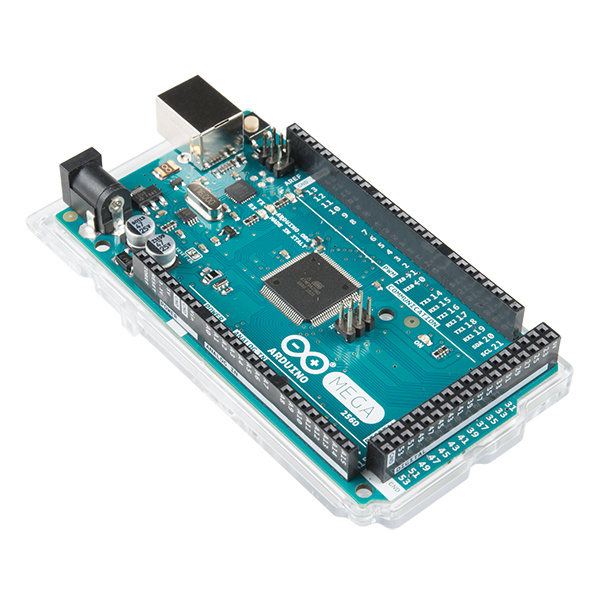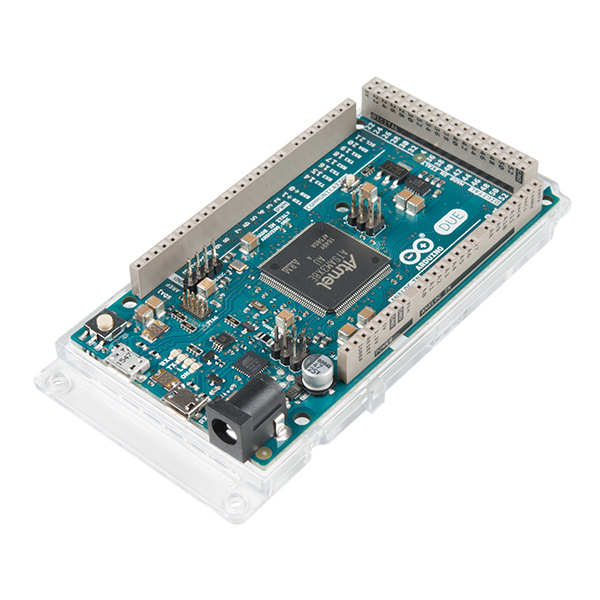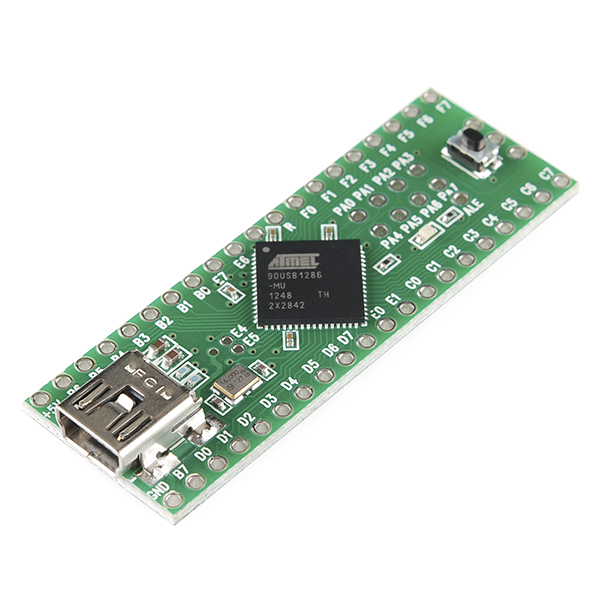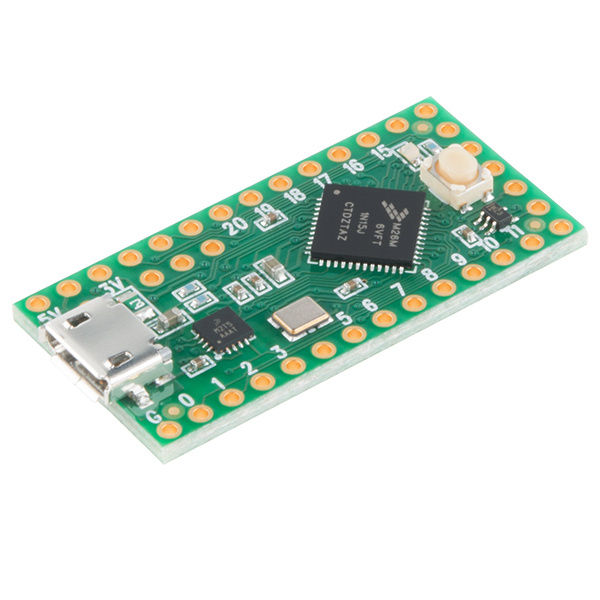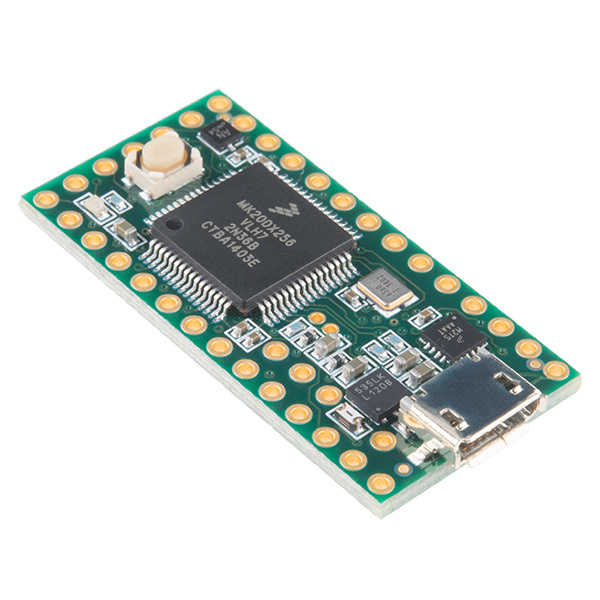Choosing an Arduino for Your Project
More Power!
Need some extra "beef" in your Arduino? Need more I/O pins, or a faster processor? That's where Arduino's like the Mega or the Due come into the picture.
Arduino Mega: The Souped Up Uno
The Arduino Mega is what you might get if you packed four Arduino Uno's into one board. There are 54 I/O pins, instead of the 14 an Uno gives you. That's a whole lot of extra LEDs! Instead of one hardware serial port, there are four. And the Mega sports a whopping 256 kB of flash program space. Not to mention 16 analog inputs, and 14 PWM outputs. The Mega just has more of everything.
The brain of the Mega is an ATmega2560, a fully souped up ATmega328. Aside from the massive processor overhaul, the Mega still shares a lot in common with the Arduino Uno. There's a secondary IC on-board (an ATmega16U2) to convert USB-to-serial to allow USB programming. It runs at the same speed -- 16 MHz. All of the pins are broken out in a way that keeps the board shield-compatible. Because of these similarities, the Mega is a good option for Arduino beginners and experts alike.
If your Arduino project is hitting a wall because you don't have enough I/O, or if you're running out of program space, consider stepping up to the Mega.
Arduino Due: Arduino Harder
You thought the Mega was powerful? The Arduino Due is a revolutionary take on the Arduino platform. It sports an entirely different processor architecture -- ARM instead of AVR. It's a 32-bit processor, clocks in at 84 MHz, and has native USB support.
Arduino Due
DEV-11589This thing sports many unique features that other boards don't have. Stuff like:
- Two digital-to-analog converters (DACs), which allow the board to output true analog values (instead of PWM). This means you can play audio out it!
- USB on-the-go (OTG) capability allows the Due to act as both a USB device and a host. So you can hook up other USB devices -- like flash drives, WiFi modules, or phones -- to the Due.
- Direct Memory Access (DMA) allows the microcontroller to offload memory-access tasks, so it can perform other operations at the same time.
There are also some new things to watch out for. The Due's processor -- an ATSAM3X8E -- can't work at 5V, so the board only runs at 3.3V This means it may not be compatible with all shields.
The Due has some amazing functionality, but it's also a more advanced board. It's not recommended for beginners, but if you have a project that might take advantage of the Due's unique characteristics, check it out!
Teensy
The Teensy line is a collection of microcontrollers from PJRC, based around several different powerful ICs. There is an option to use a Teensy with Arduino IDE if you install the Teensyduino add-on.
Teensy++2.0
The 8-bit Teensy++ 2.0 runs at 5V/16MHz and breaks out all of the I/O available on the AT90USB1286 to breadboard friendly 0.1" spaced headers. The development board has 127kB of flash memory available for programming. There 46 digital I/O pins available with 8 analog inputs and 9 PWM outputs.
Teensy++ 2.0
DEV-11781To program, you would simply install the Teensyduino add-on for the Arduino IDE and upload via USB.
Teensy LC
The 32-bit Teensy LC runs at 3.3V/48MHz (with the exception of pin 17 which can output 5V for addressable LED strips). This board also makes the I/O available to breadboard friendly 0.1' spaced headers. The development board has 62kB of flash memory available for programming. There are 27 I/O pins available with 13 analog inputs, and 10 PWM pins.
Teensy LC
DEV-13305To program, you would simply install the Teensyduino add-on for the Arduino IDE and upload via USB.
Teensy 3.2
The 32-bit Teensy LC runs at 3.3V/72MHz but the I/O pins are 5V tolerant. This board also makes the I/O available to breadboard friendly 0.1' spaced headers. The development board has 256kB of flash memory available for programming. There are 34 I/O pins available with 21 analog inputs, and 12 PWM pins.
Teensy 3.2
DEV-13736To program, you would simply install the Teensyduino add-on for the Arduino IDE and upload via USB.
Arduino MKR Vidor 4000
The MKR Vidor 4000 is the first ever Arduino based on an FPGA chip with a SAMD21 microcontroller. It includes a WiFi, BLE, MIPI camera connector, micro HDMI, mini PCI express connector, I2C connector, LiPo Connector, and USB port. The board can perform high-speed digital audio and video processing.

Arduino MKR Vidor 4000
DEV-14870The board operates at 3.3V and can be programmed with a USB cable.
